Catch Me If You Can
Developed by Julie Klann, PCM Play Intensive 2021
(FOCUS: K-2, STEAM, Literacy, Creativity & Making, Design Thinking)
The Leprechaun is on the loose! Let your creativity shine as you write a step by step plan and put your plans into action to build a trap to catch a Leprechaun! As engineers, you will approach the design process using everyday household items to create an inviting masterpiece. Then WHALA! the Leprechaun will come visit, find himself trapped leaving behind all of his gold, and allow you the great opportunity of practice setting up an experiment and testing your trap.
This lesson will challenge students to use their engineering abilities, practice their problem-solving skills, and creative thinking. They will generate ideas into making a contained system to keep the Leprechaun in, while designing an inviting way to entrap and lure the Leprechaun in.
.
Materials
(You do not need to have everything on this list. Whatever you want to use for your Leprechaun Trap. It’s up to you!)
- Tape
- Glue
- Scissors
- How To Catch A Leprechaun by Adam Wallace (book/story online)
- Cardboard
- String
- Construction Paper
- Boxes
- Binder Clips, Paper Clips
- Rubber bands
- Small Paper or Plastic Cups
- Large Paper or Plastic Cups
- Paper Plates
- Craft Sticks
- Shamrocks (handmade/bought)
- Vibrant, bright color crayons, markers, colored pencils
- Pipe Cleaners
- Legos
- Tissue paper
- Paint
- Cotton balls
- Glitter
- Anything gold
Set Up
Gather materials from around the house and spread it all out in front of you. Choose what supplies you will use to build. You can take more than you need. Remember: Leprechauns are attracted to shiny, sparkly materials. They also love COINS!
Student’s Job
Write a step-by-step plan to build a trap to catch a Leprechaun. Approach problems using the Engineering Design process.
- Read the book, How to Catch a Leprechaun by Adam Wallace or listen to the read aloud on YouTube. Observe the traps they create in the story while thinking of ideas for your own trap. Draw a sketch of your trap on a blank piece of paper using the materials (some or all) that you gathered. This will be a rough copy. You can always choose to add/take out materials later.
- After drawing a sketch, create a planning page to organize your thoughts. You can follow the step by steps for the planning page below. There should be 3 sections on the blank paper (a, b, c):
- While materials are laid out in front of you, list materials you will need to make your trap come alive.
- Draw how you will “lure” your Leprechaun in. What bait will you use? Will there be a road of green glitter? Lucky charms? Sparkles? Shiny materials? Stickers? Shamrocks- bought or homemade. Will there be coins/$ leading him the your trap? Will there be a ladder he has to climb made out of pretzels and marshmallows?
- Trapping Mechanism: Draw a picture of what the entrapment will look like? Will it be a pulley system (using a pretzel, straw, pencil, etc.) for holding it up? Will it be a gate that closes? Something that falls on top of the Leprechaun? A toilet paper roll that they can’t exit from? Will it be a ladder leading them to a box that they can’t climb out of? *You can build a ladder with pipe cleaners, popsicle sticks., twigs, Legos *
- Now it’s time to build. Using your planning page, gather the materials you are using and begin constructing. Remember- no trap is exactly the same! Be unique. Follow your own planning page. At first if it does not work, KEEP TRYING!
- Once you have finished building, have the trap all set up to catch the Leprechaun. Dazzle it up with shiny, glittery goodness, and then leave it be and let the waiting time begin!
Further Challenges:
- Create a Leprechaun to catch
- Build an Easter Bunny trap
- Go on a hunt to find the Leprechaun’s gold. Draw a treasure map and follow it.
Teacher’s Job
Standards Alignment
COMMON CORE STATE STANDARDS.ELA-LITERACY.WRITING.2.2
Write informative/explanatory texts in which they introduce a topic, use facts and definitions to develop points, and provide a concluding statement or section.
COMMON CORE STATE STANDARDS.ELA-LITERACY.WRITING.2.5
With guidance and support from adults and peers, focus on a topic and strengthen writing as needed by revising and editing.
COMMON CORE STATE STANDARDS.ELA-LITERACY.WRITING.2.6
With guidance and support from adults, use a variety of digital tools to produce and publish writing, including in collaboration with peers.
COMMON CORE STATE STANDARDS.ELA-LITERACY.WRITING.2.8
Recall information from experiences or gather information from provided sources to answer a question.
COMMON CORE STATE STANDARDS.ELA-LITERACY.SPEAKING & LISTENING.2.1
Participate in collaborative conversations with diverse partners about grade 2 topics and texts with peers and adults in small and larger groups.
COMMON CORE STATE STANDARDS.ELA-LITERACY.SPEAKING & LISTENING.2.5
Create audio recordings of stories or poems; add drawings or other visual displays to stories or recounts of experiences when appropriate to clarify ideas, thoughts, and feelings.
COMMON CORE STATE STANDARDS.ELA-LITERACY.SPEAKING & LISTENING.2.6
Produce complete sentences when appropriate to task and situation in order to provide requested detail or clarification. (See grade 2 Language standards 1 and 3 HERE for specific expectations.)
NEXT GENERATION SCIENCE STANDARDS: ENGINEERING, TECHNOLOGY, AND APPLICATIONS OF SCIENCE6
K-2-ETS1-1. Ask questions, make observations, and gather information about a situation people want to change to define a simple problem that can be solved through the development of a new or improved object or tool.
K-2-ETS1-2. Develop a simple sketch, drawing, or physical model to illustrate how the shape of an object helps it function as needed to solve a given problem.
K-2-ETS1-3. Analyze data from tests of two objects designed to solve the same problem to compare the strengths and weaknesses of how each performs.
Connections to previous work?
“How To” writing
Engineering other traps (Santa Claus, Santa’s Elf, Easter Bunny, Tooth fairy, etc.)
Prepare/ Background Info
What is St. Patrick’s Day/Why do we celebrate?
Engineering: How to make a solid structure stand
(Foss Web- Solids & Liquids Kit 1)
Extend/ Take it Further
Students will complete a written “How To” on their Leprechaun Trap.
Play to Notice (Learning Framework)
- Social
- Emotional
- Active
- Choice
- Social support
- Child- centered
Students can work together to come up with ideas, talk about what works, and have fun together while constructing their trap!
Content Matter to Notice
Science, Technology, Arts, Engineering and Mathematics (STEAM)
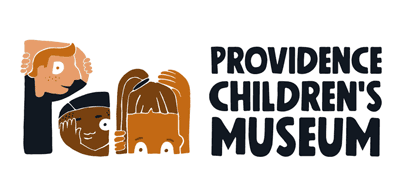

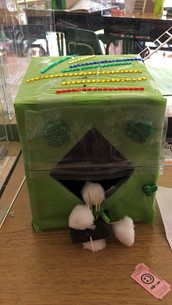

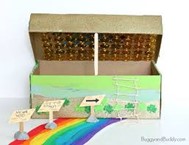
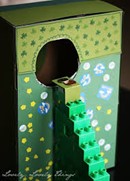
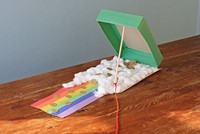
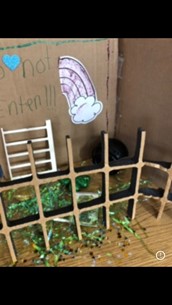
0 Comments